
All mascots in World Cup history
A tradition started in 1966
December 2nd, 2022
Giving colour to the World Cup throughout history have not only been the fans who have filled the stadiums and streets of the various host countries, but also the mascots: the true hallmark of each event. A light-hearted way of presenting oneself to the world through an animal, a symbol, an imaginary character that best represents the nation hosting the World Cup. However, it was not always like this. In the first World Cup, in fact, there was no mascot, which then made its appearance in the 1966 edition in England with the Lion Willie. And from that moment on, it became an eagerly awaited and never again forgotten and neglected custom.
This was also the case in Qatar, which for this 2022 edition presented La'eeb, a character resembling a classic white keffiyeh and whose name has the meaning of super-skilled footballer in it. His appearance, however, is indescribable, with Qatar's Deputy Director General of Marketing, Khalid Ali Al Mawlawi, inviting everyone to personally imagine what he might look like. Thus is the cute La'eeb the heir to the mascots born from 1966 to the present day.
Willie the Lion of England 1966
The father of all World Cup mascots was Willie in the 1966 England World Cup. He represented a lion, the very symbol of the British country. He wore a football outfit in the colours of the UK flag. Willie was designed by Reg Hoye, an English commercial artist who also illustrated several children's books by author Enid Blyton. The use of the lion as mascot is also a tribute to his son named Leo. The character brought great luck to England, which won its first, and so far only, World Cup there.
The young Juanito in Mexico 1970
The English idea was a great success and so it was repeated in Mexico 1970. The mascot of that edition of the World Cup was called Juanito and represented a young boy with a classic Mexican sombrero on his head and wearing the Tricolor outfit. The creator was Juan Gonzalez Martinez, an advertising graphic designer who tried to capture the fun spirit of football with Juanito's carefree image.
Two boys for Germany 1974
As a symbol of the World Cup in Germany in 1974 here are Tip and Tap, two boys, one blond and one brunette, wearing the German national team uniform. On one shirt were the letters WM, or Weltmeisterschaft, 'World Cup' in German, on the other the number 74 on the front to remind us of the year of the event. The creation was the brainchild of Horst Schafer, a gestural designer who also illustrated the World Cup poster. His idea was perhaps to represent with the two boys so close together a union between West and East Germany.
The typical Gauchito of Argentina 1978
Acting as mascot at the Argentina '78 World Cup was Gauchito (little boy) wearing the classic colours of the Albiceleste, the sombrero, the yellow bow around his neck in honour of the Sol de Mayo and holding the typical Argentine gaucho whip. The South American child was the brainchild of Nestor Cordoba, a cartoonist who was part of the animation studio of Manuel Garcia Ferre, the man who created Anteojito; a children's magazine that was very popular in Argentina.
The Orange of Spain 1982
The World Cup in Spain '82, so dear to Italy, saw as mascot no longer a human being as in the previous three editions but a citrus fruit symbol of Iberia: the orange. His name was Naranjito and he wore the kit of the Red Furies. This cute orange was the idea of designers María Dolores Salto and José María Martín Pacheco who presented the citrus fruit in order to avoid the commonplace of the bull as a symbol of Spain.
The jalapeño of Mexico 1986
In the wake of the fruit and vegetable theme, a typical culinary product of the host country also made its appearance in Mexico 1986. It was Piqué, a jalapeño pepper that depicted all the commonplaces of the Mexican man: long moustache and sombrero. Its name, moreover, means spicy in Spanish. However, this 'popular' idea by Segundo Perez and Emma Rosa Ramirez Valle was not much appreciated as Piqué ended up receiving a lot of racist insults.
The iconic Ciao from Italy 1990
Total revolution, however, for the home World Cup in Italia '90. No animal, man or fruit, but a stylised footballer made of cubic shapes in the colours of the Italian flag with a ball instead of a head. His name was Ciao and he was chosen through a poll carried out by Italians on a weekly basis on the Totocalcio coupon. It was created by Lucio Boscardin, an artist who said in several interviews that he got the inspiration while queuing in a car at a traffic light. It was the green, yellow and red lights mixed with the Italian flag that led him to come up with the idea for Ciao.
The dog of USA 1994
At USA 1994 there was a return to the roots with the reintroduction of an animal. It was a dog wearing the red, white and blue colours of the United States National Team and bearing the words 'USA 94' on its chest. His name was Striker, literally 'striker'. The States, as they are known, do things in a big way and for the occasion commissioned Warner Bros. to design the mascot for the World Cup. The choice fell on a dog as it was a very common pet in the United States.
Fusion of traditions for France 1998
For France 1998 here was an incredible fusion of transalpine traditions. The mascot of that World Cup was not even a rooster, coloured red and blue; the typical colours of the flag of France. His name was Footix, i.e. a mixture of the word 'football' and the ending '-ix' taken from the popular transalpine comic Astérix. The creation was the work of graphic designer Fabrice Pialot, who wanted to encapsulate the entire French tradition in the cockerel.
Three characters for South Korea and Japan 2002
Total innovation for the 2002 World Cup in Korea and Japan with three imaginary computer-generated characters. Three figures, one orange, one purple and one blue linked together by Atmoball, an imagination game similar to football. The three names, Ato, the coach, and Kaz and Nik, the two players, were voted for online and in McDonald's locations in the two host countries.
Another lion for Germany 2006
In the 2006 World Cup in Germany, which always brings back sweet memories in Italians for the victory in the final against France, a lion returns once again. His name was Goleo VI, from the fusion of the words 'Gol' and 'Leo', he wore the colours of the German national team and was accompanied by a ball named Pille, a colloquial term for football in Germany.
The leopard of South Africa 2010
The South African Federation for the 2010 World Cup chose a leopard as Mascot. Its name was Zakumi, which came from the fusion of 'Za', short for 'South Africa' in the Afrikaans language, and the word 'Kumi', meaning 'ten' in various local dialects. Several companies were involved in the design of the mascot for this South African edition, until the idea of Andries Odendaal, a Cape Town designer, finally won.
The Brazil 2014 armadillo
Brazil also chose a typical animal as the mascot of the 2014 World Cup. It was a three-banded armadillo, a breed endemic to north-eastern Brazil, called Fuleco from the union of the words 'futebol' and 'ecology'. The animal did not bring great luck to Brazil's hosts, who exited the World Cup in the semifinals with a resounding 7-1 defeat against Germany, who would later lift the trophy to the sky.
The Wolf of Russia 2018
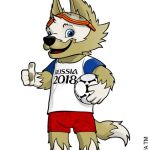
Serving as mascot at the Russia 2018 World Cup is the wolf Zabivaka, whose name literally means 'the one who scores' in Russian. In addition to a suit in the colours of the host country's flag, he also wears sports glasses; a gadget he believes gives him special powers on the pitch. Before becoming the official mascot of that World Cup, however, Zabivaka had to defeat a Siberian tiger and a cat in a poll. It was precisely the glasses that designer Ekaterina Bocharova wanted. A useful object for the wolf as he needed to protect his eyes given his very fast run.








































.png)


.jpg)




















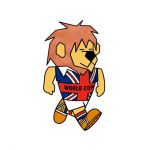








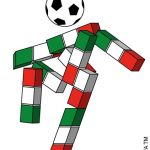
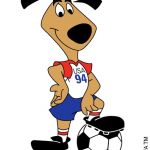
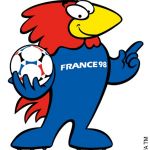







.png)


